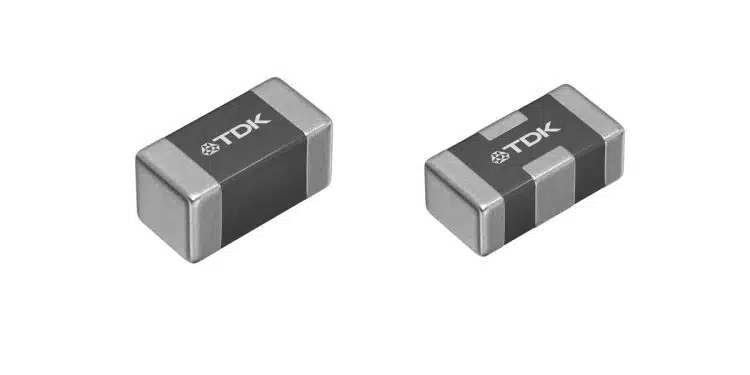TDK Corporation has announced the addition of two new varistors to its AVRH series for automotive applications.
Both are characterized by the high electrostatic discharge (ESD) withstanding voltage demanded to ensure the safe operation of safety-critical automotive functions that comprise advanced driver assistance systems (ADAS).
Both of the two new varistors in TDK’s AVRH series are compliant with the AEC-Q200 automotive standard and fulfill 25 kV voltage resistance requirement under IEC 61000-4-2 standard in the electrostatic discharge test.
They operate within the temperature range of -55 °C to +150 °C. They not only meet anti-ESD requirements, they also have minimal footprints, useful as automotive OEMs attempt to miniaturize.
Mass production of both the AVRH10C220YT201MA8 and the AVRH16A2C270KT200NA8 is scheduled to begin in March 2024.
The percentage of electronics in the total BOM (bill of materials) of automobiles is increasing as automotive OEMs add and refine ADAS features such as lane departure warning, collision avoidance, and adaptive cruise control. That is true of electric vehicles (EVs), hybrids, and traditional gas-fueled vehicles alike. Auto manufacturers are also working on autonomous driving, which requires the inclusion of even more sophisticated electronics. The electronic control units (ECUs) that manage all of these new electronic subsystems are particularly susceptible to damage from ESD. The problem is that even the briefest interruptions in safety-critical ADAS and autonomous driving functions are intolerable, and the potential for the problem only increases as more electronics are added to each vehicle.
Varistors are fundamental circuit elements for handling severe voltage irregularities. In automotive applications, they protect delicate ECUs, and are instrumental in conforming to automotive safety standards such as AEC-Q200 and IEC 61000-4-2.
The AVRH10C220YT201MA8 is designed to support electronics on a LIN bus. It has a maximum continuous voltage of 16 V and a capacitance of 200 pF. The 1005 size (1.0 mm (L) x 0.5 mm (W) x 0.5 mm (H)) is 75% smaller than the existing model. The smaller size allows customer devices to be smaller therefore reducing the consumption of materials. This product also uses TDK’s proprietary coating technology to enhance durability. Small as it is, it achieves the high reliability needed to meet the automotive quality standard.
AVRH16A2C270KT200NA8 is designed to support electronics on a CAN bus. It has a 2-in-1 array structure, in which the functions of two varistors are integrated into a single element. Another characteristic is that TDK’s proprietary design technology minimizes the capacitance difference between the channels. It is designed at the 1608 size (1.6 mm (L) x 0.8 mm (W) x 0.6 mm (H)).
Moving forward, TDK will continue providing customers with flexible support for designing their diversified automotive equipment by expanding the product lineup through further downsizing, increased operating voltage and expansion of capacitance range, etc.
Glossary
- IEC 61000-4-2: An electrostatic discharge immunity standard formulated by the International Electrotechnical Commission (IEC)
- CAN: Controller Area Network, one of the communication protocols for automotive LANs.
- LIN: Local Interconnect Network, referring to a communication standard with the goal of reducing the cost of automotive networks
- ADAS: Advanced driver-assistance systems
- ECU: Electronic control unit
- ESD: Electrostatic discharge
Features
AVRH Series
- ESD resistance of 25kV
- Expansion of operating areas as it supports temperatures up to 150 °C
- AEC-Q200 compliant
AVRH10C220YT201MA8
- Space saving by small footprint
- An environmental design that reduces the consumption of materials
AVRH16A2C270KT200NA8
- A 2-in-1 array structure in which a single chip can function as two varistors
- A specification is that the capacitance difference between channels is minimized (to less than 1.0 pF)
Applications
- AVRH10C220YT201MA8: Automotive LIN systems
- AVRH16A2C270KT200NA8: Automotive CAN and CAN-FD systems































